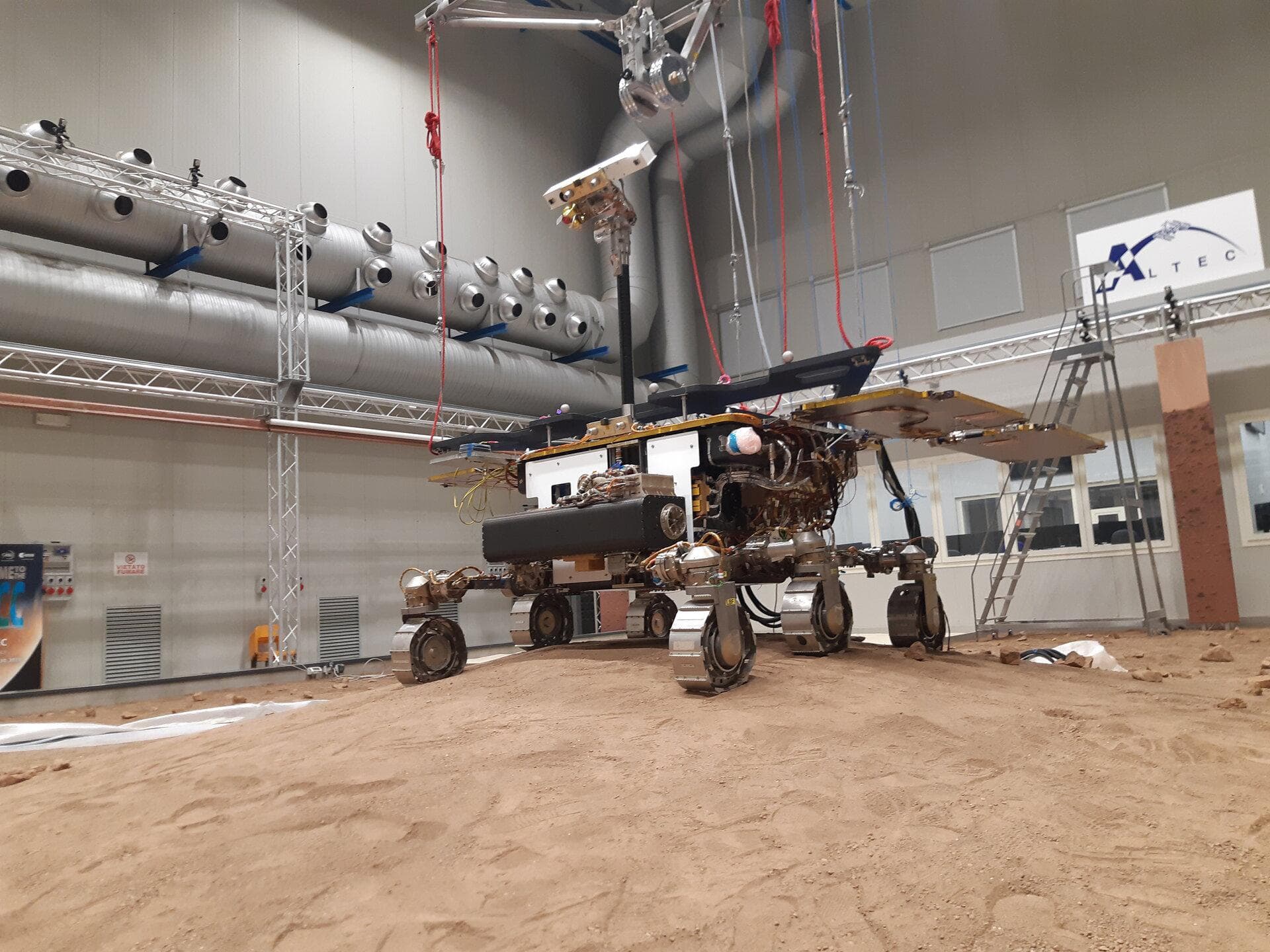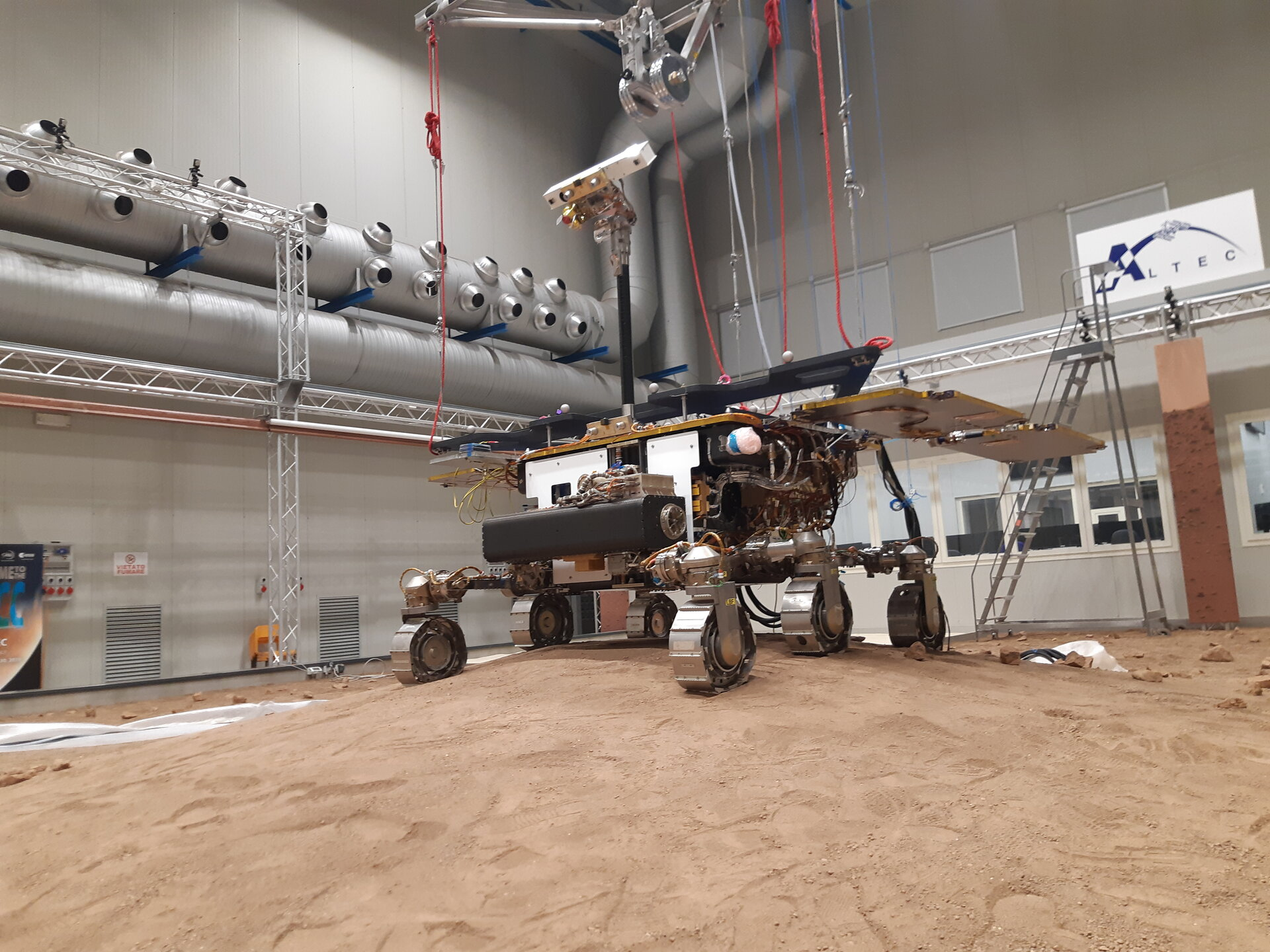The European Space Agency announced the beginning of the first tests of the ground model of the Rosalind Franklin rover. They are conducted in a Martian simulator: a special chamber prepared by Thales Alenia Space. Inside it, a section of the surface of the Red Planet is simulated. To simulate the level of Martian gravity, the rover model is connected to a special unloading unit, reducing its weight by two-thirds.
Testing in the Martian simulator is primarily necessary to train the mission specialists who will in the future drive the real rover once it has landed on the Red Planet. The camera allows them to rehearse numerous actions, like driving on different types of surfaces, overcoming side slopes, hills and rocky terrain.

Also, the engineers will learn to practice elements of the science program as well. These include surface panning and drilling. Rosalind Franklin has the ability to mine rock samples from depths of up to 2 meters. This greatly increases the chances of finding biomarkers that may indicate that the Red Planet was inhabited in the past.
Subsequently, the ground model will embark on more sophisticated tests. These will include trajectory control tests, where the rover must automatically correct for terrain-induced deviations and stay within 20 cm of a given direction. Then it will be the turn of tests of autonomous driving functions. The rover will have to independently assess the passability of the terrain and build a driving route.





